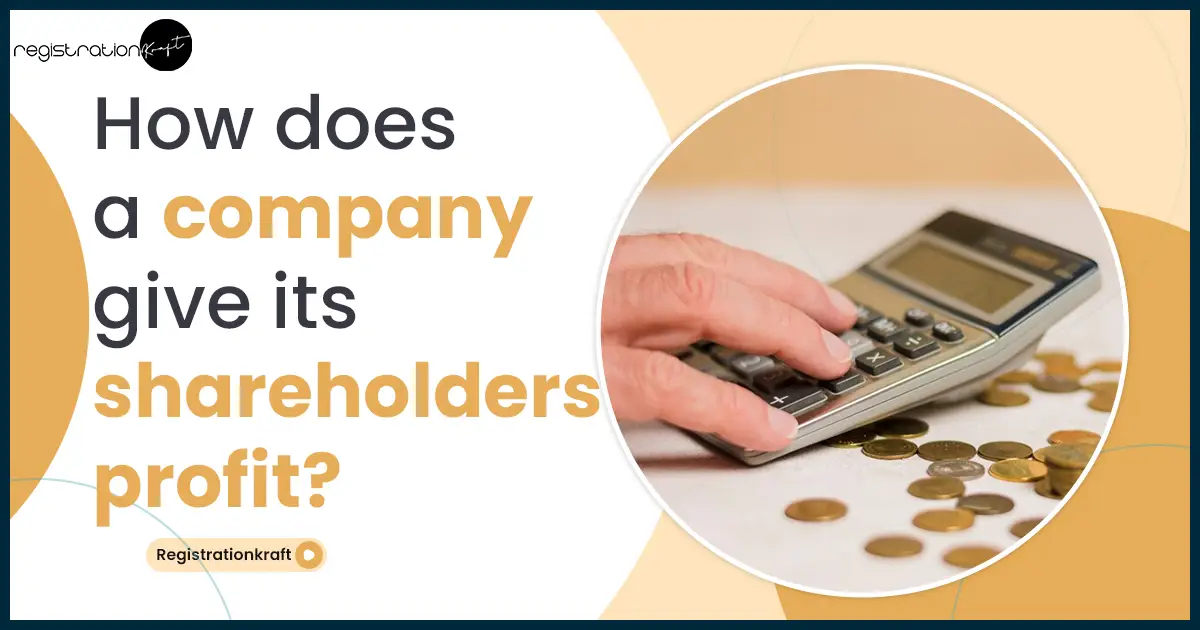In order to raise capital, many companies sell their stocks. Shareholders are those individuals or entities who buy stocks or shares of such companies. The shareholders are also commonly referred to as ‘Stockholders’ of a company. The stockholders own a chunk of the company. The more shares a stockholder has, the bigger stake he has in a company.
What Are Shares?
Before we learn about what a shareholder is, it is important to know the meaning of ‘share’. A company’s capital is divided into many units. Each unit of the company is known as its share.
A share is a unit of the company’s ownership. There are two kinds of shares, namely:
- Equity
- Preference
A company’s ordinary shares are referred to as equity shares. Those with the equity shares of the company are the real owners of the company. When you invest in a company’s equity shares, the number of shares held by you denotes your ownership stake in the company. On the other hand, preference shares have more ‘preference’ over equity shares when it comes to matters such as capital repayment.
Who is a Shareholder?
Any individual or entity owning a share or a stock in a company is entitled to be its shareholder. A share denotes a fractional ownership interest in a company. An investor usually invests in companies listed on a stock exchange. Many companies issue shares of stock in the form of Initial Public Offering (IPO). By purchasing IPOs, new investors can join the company’s list of existing shareholders. Investors can be individuals as well as institutions.
What Does a Shareholder Do?
A shareholder of a company is not directly involved in the company’s day-to-day activities. For instance, if you buy 100 shares of Tata Power, no one will ask you to oversee the company’s budget or attend its meetings with the Board of Directors. However, you can still have a say in what happens in the company and how it is being operated. Many companies’ shareholders meet on a regular basis to discuss and give their vote and opinions on various matters. There can be several elections for your investment company’s directors. The shareholders have the choice to accept or reject such elections.
The shareholders also enjoy financial benefits. Companies pay dividends to its shareholders. A dividend is a share of the company’s profits. It is important to note that not all companies distribute dividends, while some companies regularly distribute them. If you have shares of one or multiple companies that provide dividends, you can have a great passive income source. An increase in the price of the shares is also advantageous to the shareholders. Imagine purchasing 100 shares of a company at ₹1000 each. 6 months later, the share price jumps to ₹3000. A ₹2000 profit per share could be earned if decided to sell your shares. However, there is also a possibility that the share value can decline to the point where it is worth less than what you initially paid.
How a Company gives Shareholders Profit
Capital Appreciation: A shareholder of a company is given profit through capital appreciation by making profit on the capital invested when the price of the share goes up. Gains from shares can go as high as 100 percent or more. However, capital appreciation isn’t always guaranteed and there’s always a possibility that the market price would remain lower than the buying price.
Earning from the Company’s Dividends: Apart from the capital gains on shares, investors generally receive dividends from the company they have shares in. Dividend is received on each share, which means more shares means more dividends. A company distributes its profits to all the eligible shareholders by declaring partial or full dividends. While the company distributes a major portion of its profits in form of dividends, it keeps the rest of the profit for other objectives, such as business expansion.
Dividends are distributed per share. The dividend yield is calculated as mentioned below:
| (Dividend Yield = Cash Dividend per share / Market Price per share * 100.) |
Dividend-Paying Methods used by the Companies
Companies that pay dividends to the shareholders use the following methods:
Residual Divend Policy
Companies that use the residual dividend policy method rely on equity that is internally generated for financing new projects. As a result, it is only after all the project’s capital requirements are met that dividend payments can come out of the residual or leftover equity. The benefit of a residual dividend policy is that it enables a company to use its retained earnings or residual income to invest back into the company, or into its new projects which can be profitable to the company, before returning funds back to the shareholders in the form of dividends.
A company’s stock price can fluctuate if the dividend rises or falls. If the management team of a company does not believe that it can stick to a strict dividend policy with consistent payouts, it must go for the residual method. In such a case, the management team has the liberty to pursue opportunities without being constricted due to a dividend policy. However, investors can demand for a higher stock price relative to companies belonging to the same industry that have more consistent payout of dividends. Another disadvantage of this method is that is may lead to inconsistent and uneven payouts of dividends which can contribute to the company’s stock price’s volatility.
Stable Dividend Policy
In case of stable dividend policies, companies consistently pay a dividend on an annual basis regardless of the fluctuations in their earnings. The dividend payout amount is generally decided by forecasting long term earnings and calculating a percentage of earnings to be paid out. Companies can form a target payout ratio, under the stable policy, which is the percentage of earnings which is to be paid in the long term to the shareholders. The aim of this policy is to reduce uncertainity for the investors and to offer them a valuable source of income on an annual basis.
Similar Post: What is Company Shareholder Agreement in India?
Hybrid Dividend Policy
Hybrid Dividend Policy is a mix between residual and stable dividend policies. Since companies experience fluctuations in the business cycle, they can use the hybrid divided policy to establish a set dividend which represents a relatively small portion of annual income and can be maintained easily. In addition to the set dividend, the companies are eligible to offer an extra dividend which is paid only when income exceeds certain benchmarks. This policy is a popular choice for companies that pay dividends.
List of Highest Dividend Paying Stocks
Here is a list of the highest dividend paying stocks in India in 2024:
| Company | Dividend % | Dividend (INR) | Ex-Date | Dividend type |
| Vedanta Ltd. | 1850 | 18.50 | 23-03-2023 | Interim |
| Power Finance Corporation Ltd. | 35 | 3.50 | 24-02-2023 | Interim |
| Coal India Ltd. | 52.5 | 5.25 | 08-02-2023 | Interim |
| GAIL India Ltd. | 40 | 4 | 21-03-2023 | Interim |
| NTPC Ltd. | 42.5 | 4.25 | 03-02-2023 | Interim |
| ITC Ltd. | 600 | 6 | 15-02-2023 | Interim |
| REC Ltd. | 32.5 | 3.25 | 09-02-2023 | Interim |
| Hindustan Zinc Ltd. | 1300 | 26 | 29-03-2023 | Interim |
| Steel Authority of India Ltd. | 10 | 1 | 24-03-2023 | Interim |
| NMDC Ltd. | 375 | 3.75 | 24-02-2023 | Interim |
| HCL Technologies Ltd. | 900 | 18.00 | 28-04-2023 | Interim |
| Hinduja Global Solutions Ltd. | 25 | 2.5 | 06-03-2023 | Interim |
| Banco Products (India) Ltd. | 400 | 8 | 24-02-2023 | Interim |
| Renaissance Global Ltd. | 30 | 3 | 19-07-2022 | Final |
| IndiGrid InvIT Fund Ltd. | – | Interest distribution: 0.5 | 31-01-2023 | ROC |
| Taparia Tools Ltd. | 775 | 77.5 | 16-03-2023 | Interim |
| Styrenix Performance Materials Ltd. | 800 | 80 | 24-03-2023 | Interim |
| Geojit Financial Services Ltd. | 300 | 3 | 01-07-2022 | Interim |
| Indian Metals & Ferro Alloys Ltd. | 50 | 5 | 03-11-2022 | Interim |
Rights Issue and Bonus Issue of Shares to the Shareholders
Dividends aren’t the only way of making money as a shareholder. Many companies reward their shareholders by offering right issues and bonus shares. Suppose, you purchase 100 shares. You get a bonus share on each share. This means that you will receive additional 100 shares, which will make the total number of shares held by you to 200. Bonus issue increases the number of shares and at the same time, reduces your investment cost. On certain occasions, companies announce a rights issue instead of announcing dividend. In a rights issue, existing shareholders are given a chance to purchase additional shares at a relatively lower price compared to the present market price. Like in the case of bonus issue, a rights issue is also offered according to the shares already owned by the shareholders.
Conclusion
As a shareholder of a company, you are provided with dividends which can be a valuable source of income. Companies generally provide dividend on an annual basis from the profit it has earned. To understand your rights and powers as a shareholder/stockholder, you can get in touch with Registrationkraft team.

